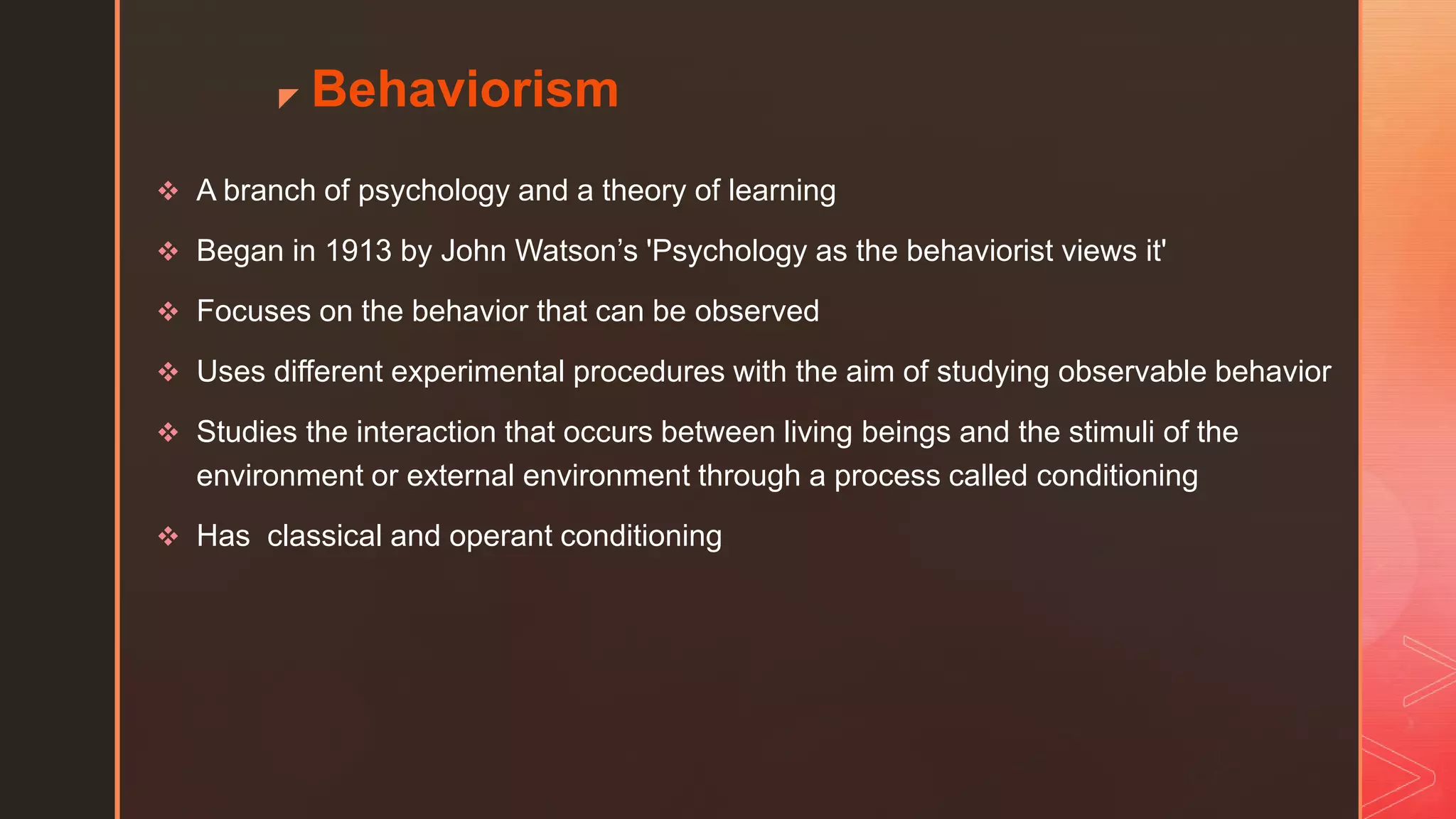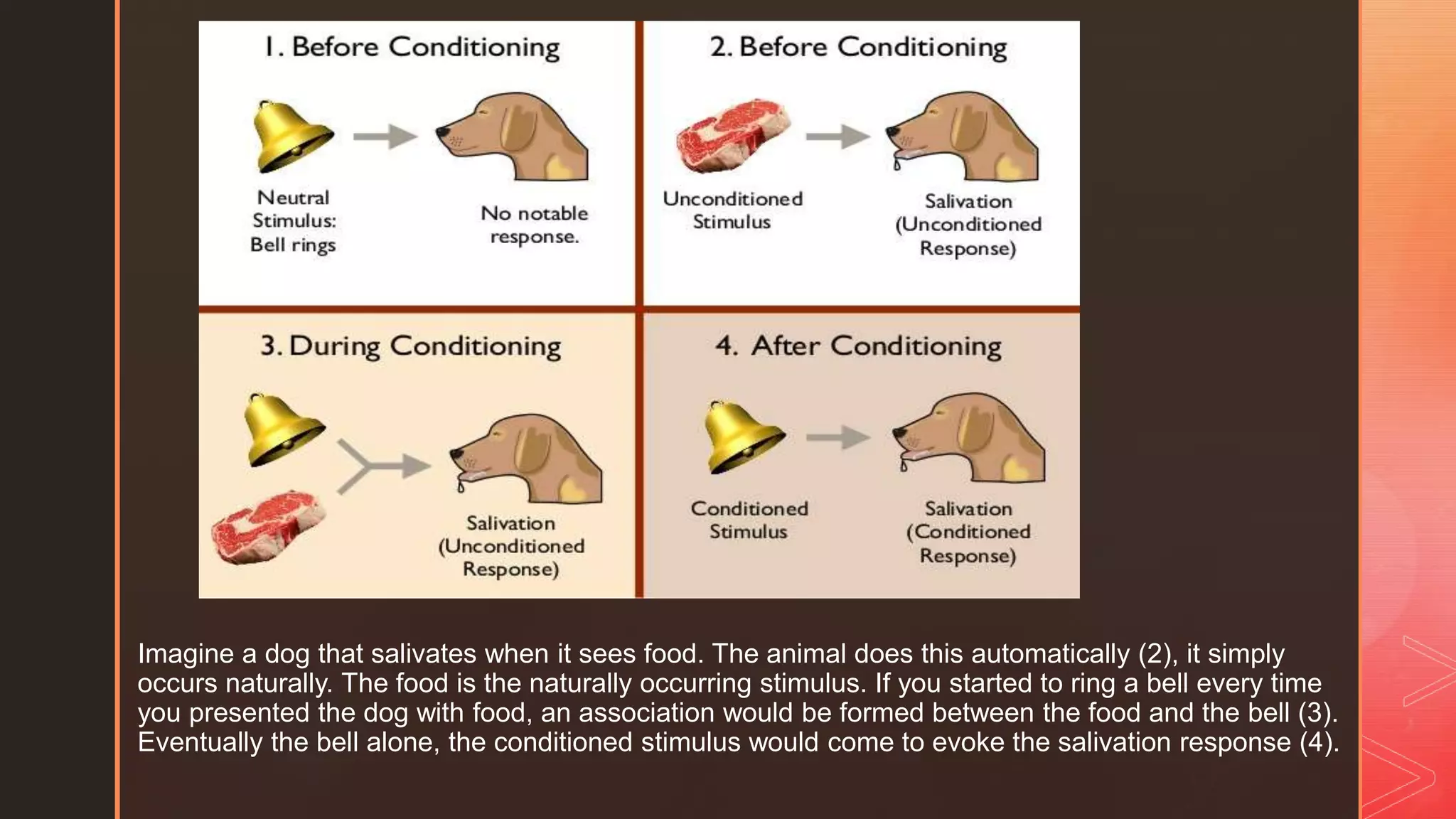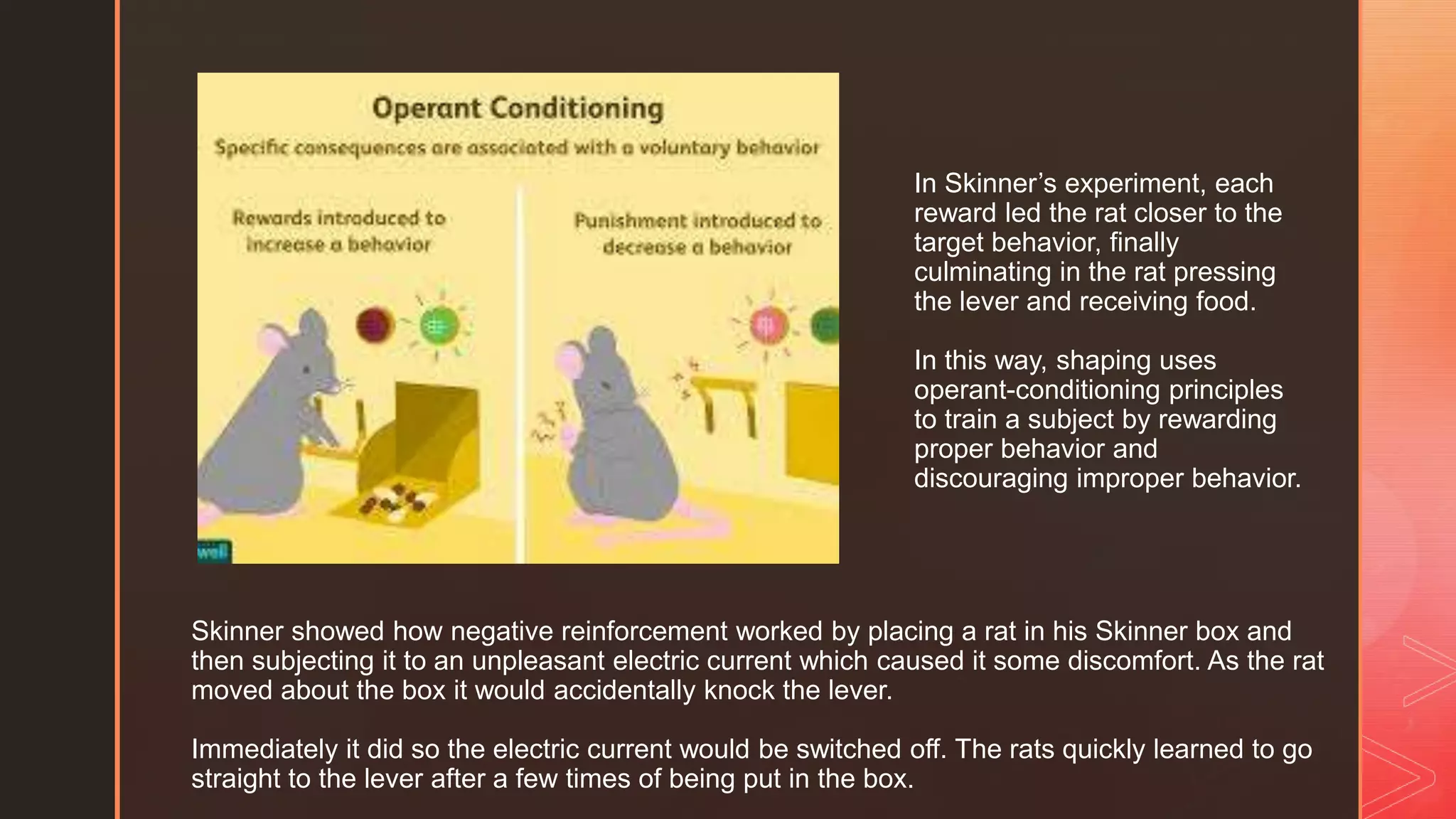This document provides an overview of behaviorism, a branch of psychology that focuses on observable behaviors and reactions to stimuli. It discusses key theorists like Watson, Pavlov, Thorndike, and Skinner and experiments they conducted on conditioning. Classical conditioning involves associating a neutral stimulus with a natural stimulus to create a conditioned response. Operant conditioning uses reinforcement and punishment to shape behaviors. The document also briefly evaluates behaviorism, noting both its scientific advantages and limitations in only considering observable behaviors.













